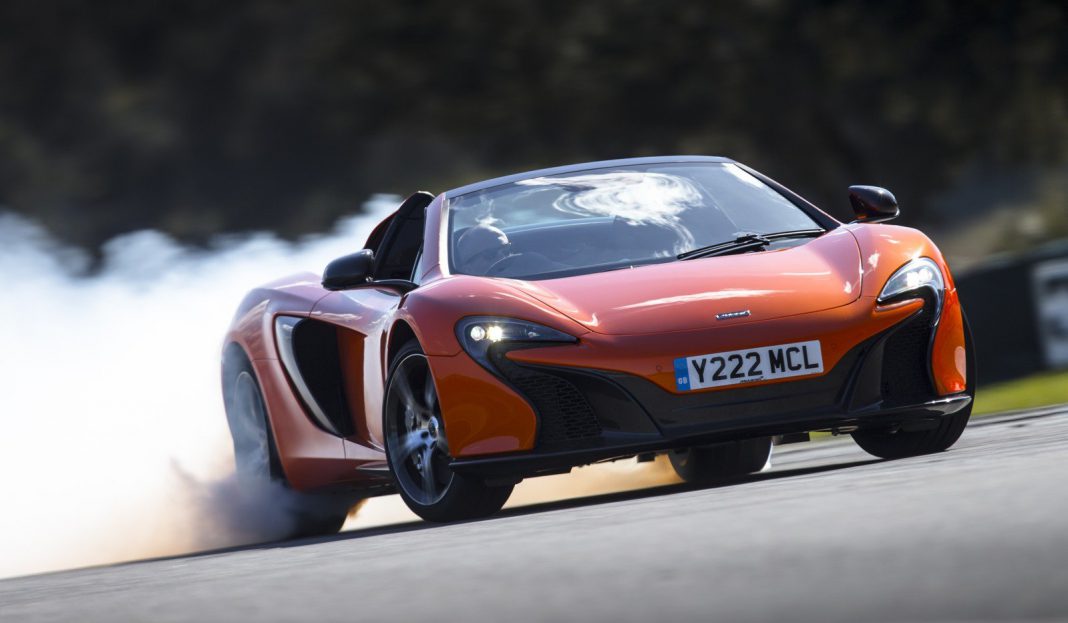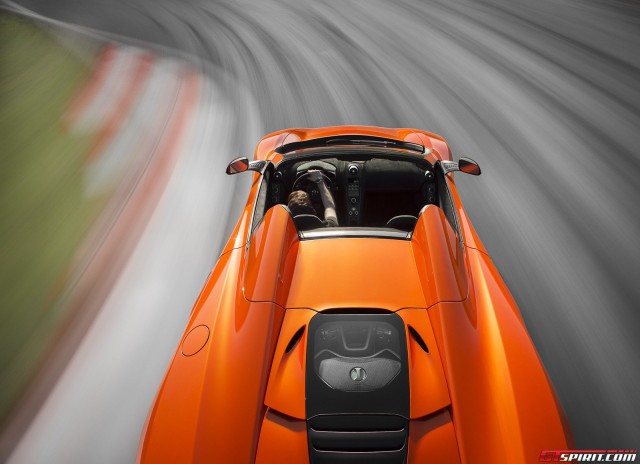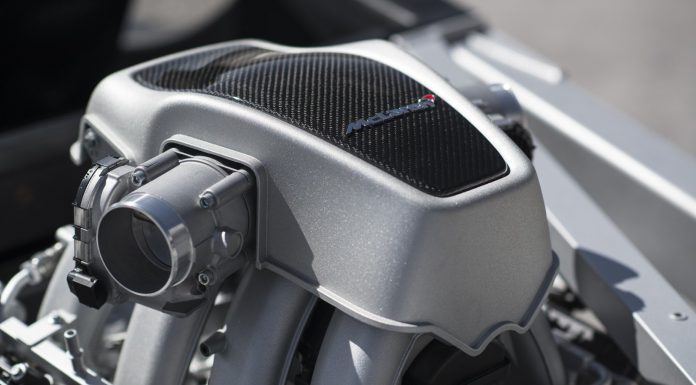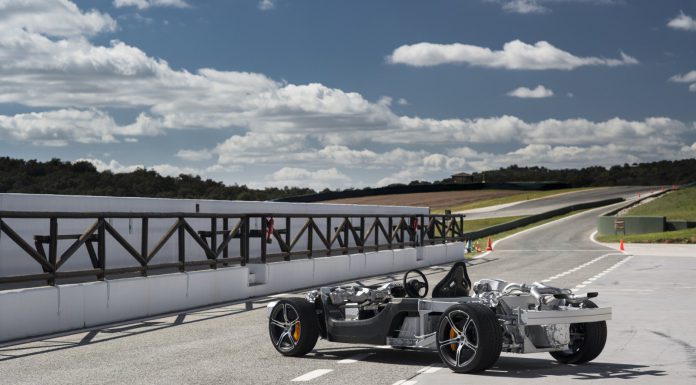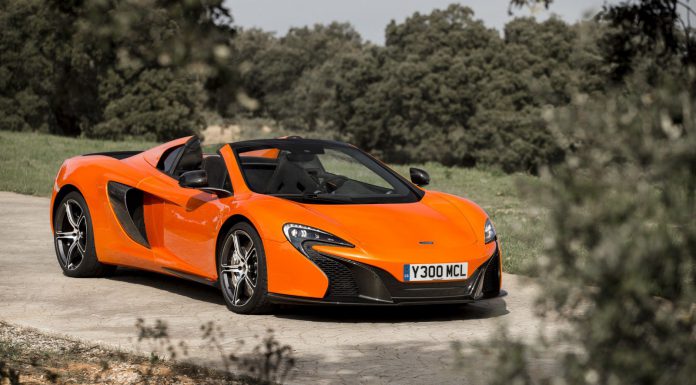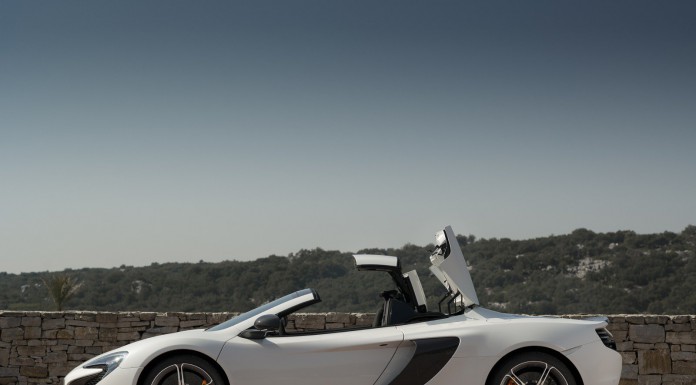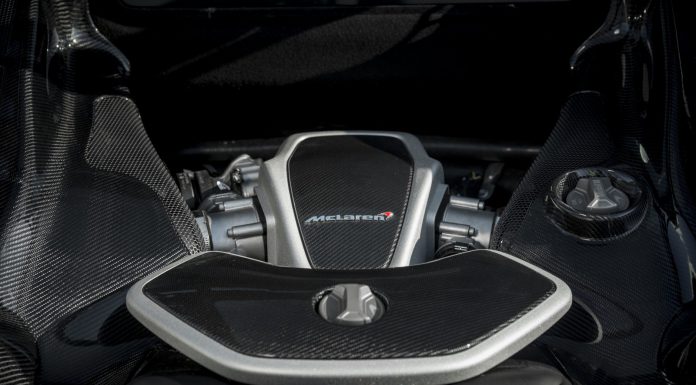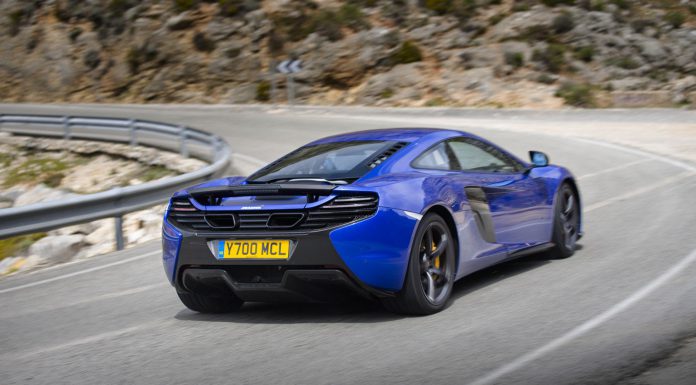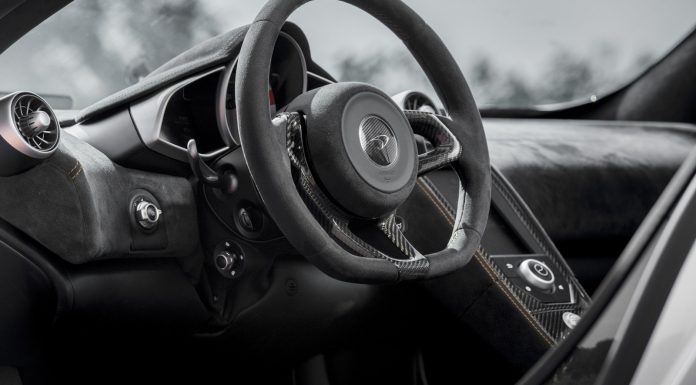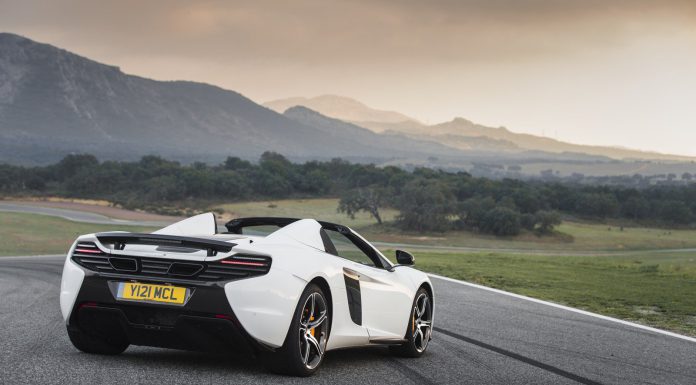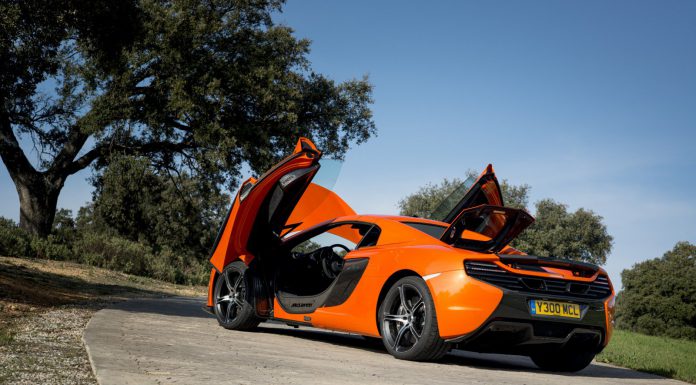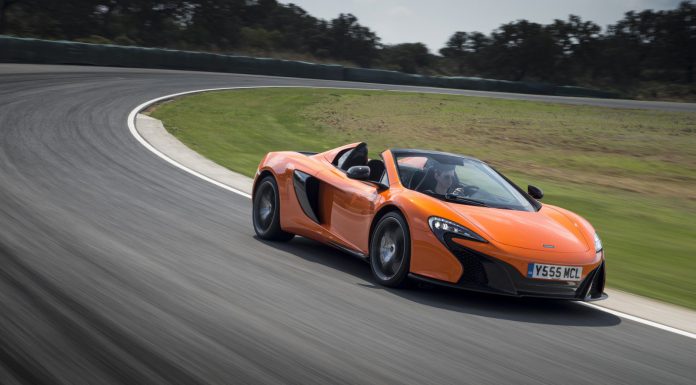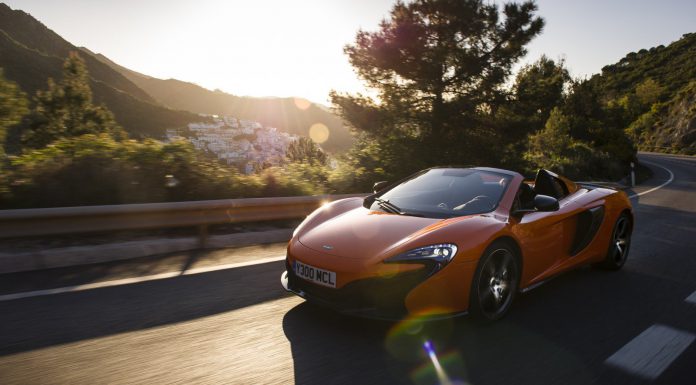When McLaren announced the 650S at this year’s Geneva Show, the official line was that it was to be additional model sitting above the 12C. But when you looked closer, it very clear that the 2015 McLaren 650S was the car to finally realise the promise of the original McLaren MP4-12C.
Certainly when I saw the 650S at Geneva, I had a sneaking suspicion that it was a toe-in-the-water exercise to judge customer reaction, and therefore that the three-year-old 12C was possibly not long for this world. After all, if you can afford a 12C, the jump to the 650S is not a big deal, and who would not want a car that takes its design cues from the mighty P1?
Now, barely two weeks after I drove the 650S at the Ascari Race Resort near Ronda, Spain, McLaren told us that due to the overwhelming influx of orders for the 2015 McLaren 650S Coupe and Spider, they are suspending 12C production indefinitely. The McLaren 12C is dead, long live the 650S!
In a nutshell, the 650S is the answer to customer requests for a car with more power and torque, and sharper styling. For those who think the 12C lacks visual gravitas by being a bit too generic looking, the 650S is the magic bullet.
Taking its styling cues from the P1 in the nose area, the new car looks spectacular, modern and distinctively McLaren. “Around 50-percent of the part numbers are different,” said Chris Staunton, Engineering Manager for body panels and closure.
The new body panels including the bonnet, front wings, side air intakes, rear wings and doors (modified). The 650S benefits enormously from the halo effect created by the P1, and this instantly recognisable family resemblance is no bad thing.
However, not one line of a McLaren car is there just for styling’s sake. McLaren boss, Ron Dennis, and chief designer, Frank Stephenson, would never countenance something that did not also have a technical justification. This is particularly critical in this case as the 650S was designed to be more sporting and more focused in its character than the 12C.
The 18-month gestation period led to the new front with P1-style LED headlamps, longer air splitters and larger low temperature intakes, better airflow management around the wheels, the blades at the bottoms of the doors, and software that uses the rear wing/airbrake in a different way.
These aerodynamic changes conspire to increase downforce by a significant 40-percent. Meanwhile the greater airflow needs of the uprated motor account for the wider high temperature intakes along the cars flanks.
In 650S form, the motor has been uprated to produce 650 PS, or 641 bhp at 7,250rpm, with 678 Nm of torque at 6,000rpm. Don’t be fooled by the high engine speed where peak torque is produced since 95-percent is available between 3,000 and 7,000rpm
While an extra 25 PS and 78 Nm of torque do not seem like a big step up for a turbocharged motor, the extra output was not gained through simply raising the boost pressure. The mechanical changes include new pistons, cylinder heads, exhaust valves, and a revised exhaust system for lower backpressure and a sportier soundtrack.
Tipping the scales at just 1,330kg dry, (1,370kg Spider), the Coupe weighs 104 kg less than the 12C, which delivers the spectacular power-to-weight ratio of 500PS/ton or 493bhp/ton.
This makes for very impressive performance, with the 0-100km/h sprint covered in 3.0 sec dead, 200km/h coming up in 8.4 sec, and 300km/h in 25.4 sec. Top speed is 333km/h, or 207 mph.
The spring rates have been increased by 22 and 37-percent front and rear respectively, and the accumulators of the ProActive Chassis have been shifted to the top of the suspension units, where the shorter fluid path provides better response.
In conjunction with this, the suspension control software has also been optimised for improved individual wheel support, and thus traction. The standard fit carbon ceramic brakes are McLaren’s next generation design, and a lot of work was done to optimise brake pedal feel and modulation.
With its uprated engine, chassis and revised aerodynamics, the 650S goes harder than the Lamborghini Aventador and Ferrari 458 Speciale against the stopwatch, beating both to 200km/h with a spectacular time of 8.4 sec.
However, more than just consummately playing the numbers game, McLaren has also carefully honed the car and driver interface to make the 650S more communicative, addressing one area where the press and some owners felt the 12C gave best to its Italian rivals.
In fact, this whole feedback thing has become a big area of debate amongst enthusiasts. While the traditional camp bemoans the fact that modern cars in general isolate their drivers too much from the proceedings, others argue that our crowded roads and lower speed limits require driver stress levels to be managed and mitigated to some extent by cars with better ride comfort and lower noise levels.
It is a fact that a street legal racecar ends up being a tiresome beast if you have to use it as a daily driver rather than just for an inspirational Sunday morning blast.
Vastly improved standards of NVH and other refinements have moved the supercar game in a different direction. Super saloons like the Audi RS6, BMW M5 and E63 AMG have rewritten the rules for fast and practical cars, and with that, the expectations of new members to the supercar fold.
Most of the people who buy supercars today therefore expect a fair degree of civility and convenience from their purchases, and would find raw and visceral 1970s machines like the Ferrari Daytona or Lamborghini Muira a bit too much of a good thing. The rest would of course revel in their closer contact with the road.
What the 2015 McLaren 650S does extremely well is strike a perfect balance between what today’s average supercar customers expect, and what the experienced hard-core enthusiast is used to.
It was raining at the Ascari racetrack where the 650S launch event was based. Having come up from the coast where it was also raining, I headed further inland in search of drier roads.
Cantering along with all systems set in Normal mode, my first impressions were of an uncommonly comfortable ride for this type of car, with perfect bounce and rebound control underpinning the McLaren 650S’s credentials as a daily driver.
For the first few kilometres, the sodden roads made exploiting the performance a frustrating affair, as moving into the throttle firmly, even in third gear just lit up the fat rear Pirellis.
Less than 20km on, the roads were bone dry and at last I could deploy all 650 horses to good effect. The first thing you notice is how smooth and progressive the power delivery is under the full acceleration that fires you down the road towards the horizon.
Unlike with some turbocharged machines that deliver a second wind at some point, there is no spike in the power band of McLaren’s M838T 3.8 litre twin-turbo flat plane crank V8, just strong and creamy smooth thrust.
In the slightly modified cabin with its optional carbon package, periphery of your vision is the rev counter needle flashing round the dial towards the 8,500rpm cut-out, as you prepare to grab the next ratio with the right hand paddle shifter.
The revised motor makes all the right inspirational noises when you open the taps fully. The throaty intake roar and deeper bass of the exhaust conspire with the twin turbochargers to stir up a soundtrack behind your head that becomes increasingly exotic with rising crankshaft speeds.
The potent torque curve means that you don’t actually need a lot of revs to move down the road rapidly in normal driving. But once you have the open road in front of you and minimal traffic, it is hard to resist the urge to simply go for broke.
Drop the hammer and the deep growl morphs into a flat plane crank V8 howl as the rev counter need passes the 4,000rpm mark, turning into a racecar-like scream as it homes in on 7,000rpm and beyond.
I notice that McLaren has improved the action of the steering wheel paddle shifters. Unlike the earlier cars, the required input is now more intuitive and matches the other control weights. Smoothness of operation is important as well, and you will find this honed to perfection here.
With the driven wheels now able to fully key into the grippy tarmac, I am really beginning to enjoy myself. I can feel the cars active chassis coming alive as it holds the car flat and unerringly poised in a long sweeping corner.
I can also feel the aero working in conjunction with the chassis, gently pressing the car towards the tarmac. This positive feedback through the seat of my pants encourages me to gently feed in the power once past the apex as I straighten up towards the exit.
That e-gas throttle is so well calibrated that you really feel you can meter in the exact number of horses required as you unwind the steering, and this is something I will revisit in the track impressions.
I come up behind a line of three cars and position myself to overtake after a bend. Moving to the left for optimum visibility, I see that the road is clear and with one squeeze on the throttle they are consigned to the rear view mirror. Safe point-to-point progress has never been easier.
The counterpoint is a car that will trickle through towns and villages at or below 50km/h in third gear on a light throttle with perfect comfort from suspension and drivetrain, and be ready to fly again the moment you hit the derestrict sign.
My review 650S had the optional carbon-fibre sports seats covered in Alcantara, which save 15kg. These deep, figure-hugging seats cost £5,000 in the UK and are positioned slightly lower in the car than the standard leather clad seats.
Admittedly, these seats are not for everyone, but as being held tightly in fast cornering is less stressful on the back muscles, and I prefer sitting low in a car anyway, they would be my personal default choice. Their Alcantara covering is also cooler in summer and warmer in winter.
An adjunct to this is the new option of an electrically adjustable steering column, either as a stand-alone item or as part of the Comfort package that retracts the wheel towards the dashboard, and motors the electric seats aft to help you get in and out.
By the time I got back to Ascari from my road drive, the rain had stopped and the wind had dried substantial swathes of the 5.4 km long circuit. As Ascari is my home circuit, I could concentrate on the car, and set about lapping with the ProActive Chassis Control and Powertrain systems in Normal mode to establish the base line.
As I warmed up the McLaren specific (MC1) Pirellis, the increased transparency of the uprated chassis was very apparent. The new front tyres feature a squarer shoulder profile to reduce slip angle and maximise the tread contact patch when cornering. In conjunction with the new top mounts, which also helps the ride quality, turn-in and steering feel are improved.
While the colour of the tarmac made it track appear to be dry, the track surface was still slightly damp in places, and as each lap unfolded, I was pleasantly surprised how easy it was to discern the difference between the bone dry and damp on the way into each corner.
That information then helped my own ‘computer’ to judge exactly how much steering and throttle to meter in to hold the cars attitude through the bend, or indeed intuitively alter it by an appropriate amount.
I normally trail brake into bends on track, and the excellent steering and chassis feedback allowed me to either hold the car in perfectly neutral balance through each bend or exit with a whiff of oversteer. Beyond the limit, the torque vectoring system comes into play.
The mechanical grip from the new 235/35R19 and 305/30R20 asymmetric tread Pirelli PZero Corsa tyres sitting on 8.5J x 19 and 11.0J x 20-inch forged alloys is most impressive, and I would have preferred the sports seats in the car I took on the road rather than the normal leather seats in the car I drove on track.
Doing the next laps in Sport mode with the throttle, gearbox and active suspension ramped up to the next level was a revelation. Everything became more focused, and the instant blast of raw acceleration down the straight bits was very intoxicating.
In track mode, the engine and gearbox settings are unchanged over Sport mode, but the chassis goes to its highest alert level, reducing roll in the bends even more.
The good thing about the McLaren system is that the Handling and Powertrain settings can be accessed separately. Thus, if you are on track in wet weather, you can have the latter in Track mode, with the Handling in Sport mode, its slightly softer suspension settings potentially providing better traction on a slippery surface.
In the dry on the other hand, the Track setting keeps the tyre slip angle to a minimum, allowing you to maximise the wide and grippy Pirelli PZero Corsa trackday rubber.
Far more than just a McLaren 12C with the volume turned up to 11, the 2015 McLaren 650S is the car that hard-core enthusiasts wished the 12C had been from the outset.
That also makes it is the most complete sub-£300,000 mid-engined supercar money can buy right now, which is exactly what McLaren set out to achieve in the first place.

